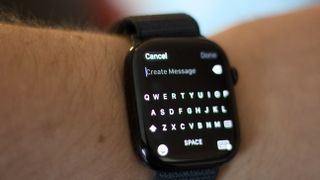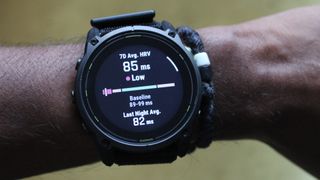
Mobile apps are revolutionizing healthcare by connecting providers and patients through innovative solutions. These technologies improve efficiency and accessibility, offering benefits like real-time health monitoring, streamlined appointment scheduling, and personalized care. This white paper examines how mobile apps are transforming patient care, leading to better outcomes and reshaping the healthcare landscape.
What are mobile health apps? Mobile health apps are digital tools developed for use on smartphones and tablets that have healthcare-related functions, including fitness tracking, medication management, telemedicine, and chronic disease monitoring. They empower users to take control of their health proactively while allowing providers to deliver accessible, efficient, and personalized care, thus revolutionizing the traditional healthcare landscape. What are the advantages of mobile health apps? Mobile health apps have helped improve access to healthcare, such as in remote areas.

They engage patients with real-time monitoring of their health and relevant insights. They also make life easier by handling appointment scheduling, medication reminders, and record management. To providers, these apps have streamlined workflows, reduced administrative work, and helped them make data-driven decisions.
Besides, they support preventive care as they track vital parameters and encourage healthier lifestyle choices. As mobile health apps eliminate the communication gap, doctors become closer to their patients, resulting in improved health outcomes and increased satisfaction. Mobile Applications in Telemedicine Mobile applications in telemedicine revolutionize healthcare delivery by making remote consultations possible and providing easier access, especially to underserved populations, while offering greater convenience and efficiency in the provision of medical services.
What is telemedicine and its benefits? Telemedicine is a practice in which healthcare services are provided remotely through telecommunication technology. It can include video consultation, remote monitoring, and electronic health record management. The major advantages of telemedicine include: Convenience : Patients can access healthcare services from their homes, eliminating the need for travel and reducing wait times.
Cost-Effectiveness: Telemedicine can lower the costs associated with health care. For instance, the number of in-person visits can be reduced and the administrative procedures streamlined. Improved Access: It allows individuals in remote or underserved areas to access medical care by connecting them with specialists who are not locally available.
Remote Consultations and Virtual Appointments Mobile applications enable remote consultations through different formats, such as: Video Calls: Many telemedicine apps have real-time video consultation capabilities, through which doctors can remotely see their patients and deliver instant guidance. Text Messaging: It allows asynchronous communication with text or chat that helps in the case of minor questions. E-Prescription: Most telemedicine applications have electronic prescription features that streamline the process for patients to collect their medications.
These functionalities not only save time but also enhance patient engagement by allowing continuous communication with healthcare providers. Accessibility for Patients in Remote Places Telemedicine highly improves accessibility for patients dwelling in remote locations or mobility-impaired patients. Such key features include: Overcoming Geographical Barriers: Patients can consult their specialists without having to move a long distance, a feature important for chronic illness patients who need routine follow-up.
Flexible scheduling: Telemedicine allows for easier and more flexible appointment scheduling based on patients' busy lives, making it possible to seek medical advice whenever needed. Remote monitoring: Most telemedicine apps allow remote monitoring of vital signs and health metrics through wearable devices. This information is then transmitted directly to the healthcare providers for continuous evaluation.
Medication Management: Mobile applications for medication management enhance patient adherence highly through automatic reminders, personalized schedules for patients, caregiver support, and enabling patient self-management to improve health-related communication with the physician. Automated Reminders and Notifications The reminders are important in medication management apps as they ensure that users take their medications on time. Applications such as Dosecast and MedHelper allow users to set reminders according to their individual schedules of medications.
The alerts can be customized according to changes in the user's routine to avoid missed doses and maintain consistency in adherence. Receiving alerts on mobile devices reduces the cognitive load of managing multiple medications. Personalization of Medication Schedules The best thing about these apps is that they offer personalized.
Users can enter as much detail as they can about their medications, such as dosages and when to take them. This helps the app generate schedules according to an individual's lifestyle. For instance, PillPack automatically imports medication lists and provides location- and activity-based reminders for the user.
This personalization makes users more interactive and gives patients the confidence to include medication management in their daily lives. Role of Caregivers in Monitoring Medication Adherence Many applications enable caregivers' role and involvement in supporting patients' drug adherence. Many applications send notifications concerning missed doses, prompting caregivers to remind or intervene more promptly.
Usually, such an application supports features for recording drugs by caregivers and conveying them back to the providers to keep them updated on changes and developments. Mobile apps bring more accountability and responsiveness between the patient and caregivers. Health Monitoring by Mobile Application Mobile applications in health monitoring change the way a patient monitors his health and communicates with healthcare providers.
Some of the main features of health monitoring via mobile applications include: Real-Time Health Monitoring: Mobile health applications help track real-time health parameters such as heart rate, blood pressure, glucose levels, and more. Certain applications also collect data from wearables like smartwatches and fitness trackers, allowing a snapshot of health trends over time. This enables early detection of problems for the user, and in that sense, real-time data collection helps to initiate proactive measures.
Integration with Wearable Devices: Mobile apps are further integrated with wearables to make health monitoring more effective. Wearables would collect huge amounts of data based on the level of physical activity, sleep patterns, and even stress levels. Apps such as Fitbit or Apple Health aggregate it, giving the user, in a nutshell, what his or her overall status is about wellness and would nudge the user to live healthier through personal recommendations.
Such connectivity ensures that data from different devices is transferred directly to the user's device, putting all health information at a user's fingertips. Most health application software for mobile devices allows one to export data to be transferred to the service provider. This functionality is crucial for maintaining continuity of care, as it allows doctors to receive real-time updates on their patients' conditions.
For example, sending alerts when the parameter monitored exceeds a threshold for summoning medical attention. Such features contribute towards the proper safety of the patient and improve communication among patients with care providers, which leads towards improvement in the results of treatment Personal Health Records (PHRs) Mobile apps for PHRs are very important for enhancing the power of the patient while effective management of health information. Below listed are a few key points through which mobile applications aid PHRs: Mobile PHR apps deliver private, anytime access to health information, including patient records, medications, and lab results.
Sites like MyChart aggregate medical documents for quick reference in emergency situations or during routine care to simplify access and preparedness. PHR apps allow the recording of symptoms, medications, and procedures to ensure complete health histories. These histories offer improved clinical outcomes as fewer mistakes are made and better-informed consultations ensue.
Useable features encourage patient activism. Boosting Patient Engagement PHRs improve engagement through medication reminders, appointment tracking, and education. By helping patients self-monitor and self-manage through informed choice, these applications improve adherence to treatments and enhance provider communication, both of which result in better outcomes.
Chronic Disease Management: Mobile applications are transforming chronic care management by monitoring patients' conditions and allowing interaction between patients and providers. Symptoms and Metrics: Health apps allow users to log key indicators such as blood glucose or blood pressure, thus offering continuous monitoring. Apps, such as My NSCLC Manager, help track symptoms to improve communication with providers, support timely interventions, and help patients understand health trends.
Educational Resources: Apps will provide tailored information on a condition, treatment, or lifestyle change, such as a diet or exercise plan. These resources promote informed decisions and treatment adherence. Patient Empowerment: Features like goal setting, medication reminders, and progress tracking are meant to encourage active participation in care.
Data exchange with providers helps in communication and, therefore, better management of chronic conditions. Emerging Technologies: Mobile applications are gradually incorporating emerging technologies to enhance healthcare delivery and patient engagement. The following section gives a comprehensive overview of the role these technologies play in mobile health applications: Artificial intelligence is changing the health sector.
Massive health data is needed to provide correct diagnoses and tailored treatments. Health risk prediction through AI-enabled applications helps with time management, better outcomes, and efficient clinical workflow management. Machine learning can be equipped with predictive analytics and patterns within historical data to predict health outcomes like disease progression or hospital readmission.
Through preemptive measures and design interventions, mHealth applications can provide proactive health management by providers. The future mHealth applications are likely to be shaped by the following trends, among others: Increased Integration of AI and AR : Combining AI with augmented reality (AR) technologies will create immersive experiences for both patients and healthcare providers. For instance, AR can enhance medical training and patient education by visualizing complex medical information.
Preventive Healthcare: Preventive care for health metrics and healthy lifestyle choices will become a priority through mobile apps. Expansion of Remote Patient Monitoring: Telehealth will increasingly have mobile applications that support remote patient monitoring of health conditions, allowing timely interventions without physical visits. Enhanced Personalization : More advanced mHealth applications will be developed using big data analytics so that wellness plans are individual based on health profiles and preferences.
App Development Considerations A healthcare application would demand much caution regarding several vital factors in developing efficient, safe, and user-friendly applications. Here are a few critical app development considerations briefly explained below: Security is paramount since health information is very sensitive. This is why there is a great need to adhere to laws and regulations such as HIPAA regarding the protection of patient's health records from unauthorized users.
Developers have to protect electronic Protected Health Information (ePHI) with great security measures like data encryption and secure login. Failure can lead to legal issues or even tarnish an organization's reputation. The UX design plays a significant role in the success and adoption of health applications.
A good application must be user-friendly and accessible to patients and healthcare providers. Good UX increases patient engagement because it allows fast access to information. Involvement with UX professionals may help design an interface that inspires frequent use.
It is very important to partner with experienced app development companies to create successful healthcare applications. They offer experience in technology and health regulations to ensure compliance with industry standards. The choice of a development partner should consider their history and familiarity with relevant technologies.
This ensures effective collaboration toward tailored solutions that can meet specific healthcare needs while including user feedback at every stage of the process. Conclusion Mobile health applications are transforming healthcare through telemedicine, medication management, and real-time monitoring. To maximize their impact, developers must prioritize security, regulatory compliance, and user-friendly design, while healthcare providers and developers collaborate to address evolving needs.
.















